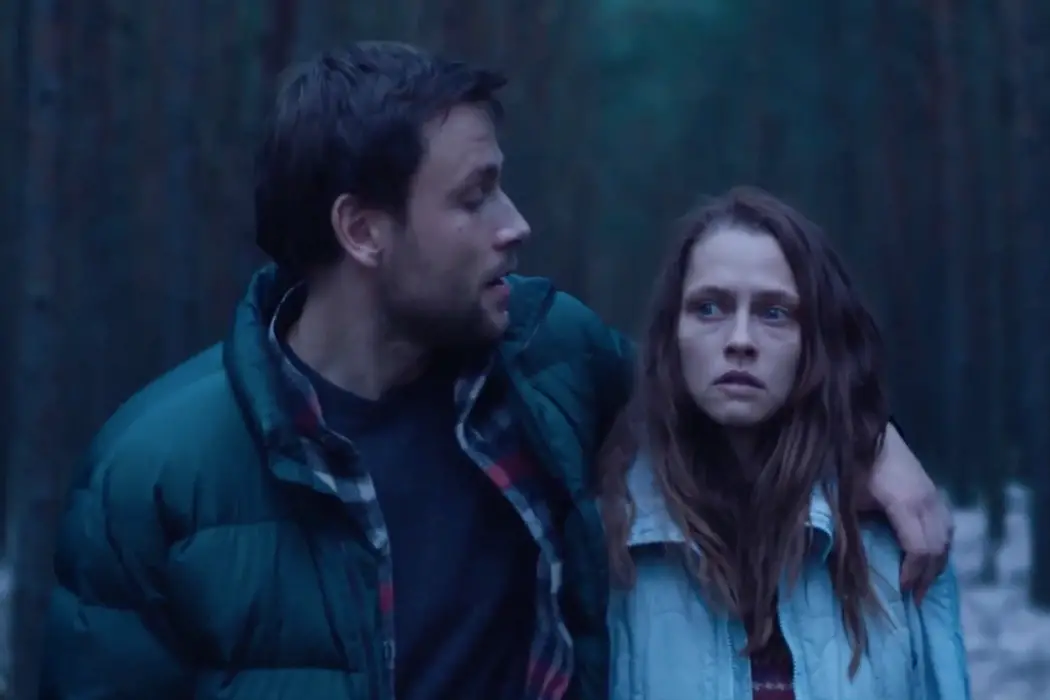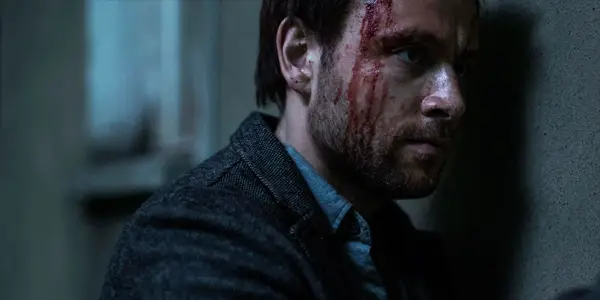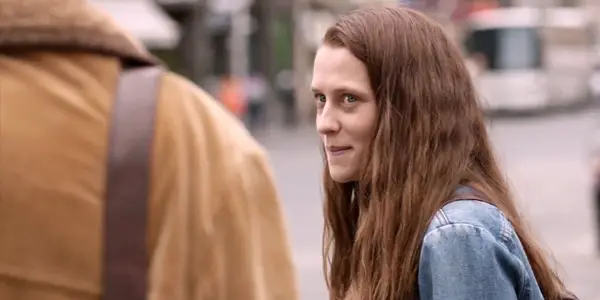BERLIN SYNDROME: Whose Side Is It Anyway?

Alex is a 28 year-old West Australian who has a…
Let me pitch a simple narrative to you: A compulsive and controlling man kidnaps a younger woman, who must outwit him to escape and survive. Now, which film comes to mind when I state that? 10 Cloverfield Lane, Room, Split, Hounds of Love or even to an extreme extent – Beauty and the Beast? It’s a narrative setup that has become quite popular lately, but with each incarnation approaching this material in a different manner. 10 Cloverfield Lane is an intense sci-fi thriller, Room is a haunting and tragic look at the situation, Split is a crazy supernatural film, and Hounds of Love is a brutal period piece that examines the nature of relationships.
Cate Shortland’s Berlin Syndrome, attempts to use this recurring narrative as the setup for a thought-provoking look at the mentality behind the men who do these terrible things. This is an interesting approach towards this material, but Shortland’s film suffers from a lack of control of perspective. This is due to it constantly shifting the narrative viewpoint between the two main characters in a fashion which blurs the line between who the real protagonist is, creating a confusing mix of plot-lines that both feel underdeveloped despite the film’s overlong running time.
Shifting Character Perspectives
The story of Berlin Syndrome begins with Clare (Teresa Palmer), an Australian backpacker who has just found herself in Berlin, using the city’s various deteriorated buildings as subjects for her aspiring career in photography. After a brief encounter during a late night of drinking with other backpackers, Clare meets the considerate Andi (Max Riemelt), a German school teacher. After a night of sex at Andi’s apartment, Clare is confused to find herself locked within and without any way of escape.
When Andi returns home, he reveals that he has kidnapped her, leaving her alone in the apartment as he continues his normal life outside. As Andi turns her into his own personal photo model (setting up the duality of the two different types of photographers, a theme that isn’t quite fully explored), constantly taking provocative polaroids of her, Clare slowly tries to escape through an assortment of different methods.

The film introduces itself through the eyes of Clare, as we see the area of Berlin as a city of untapped potential filled with eccentric but loveable citizens that coexist with a rich history of art and tragedy. Even her gaze of Andi, the initial intrigue and gradual shift towards lust for the mysterious German man, is all seen through Clare’s context. This aims to structure the film as a Gone Girl type scenario where we show the change from loveable character towards destructive deviant, making us reflect on the process and having the audience witness this conversion of personalities.
The problem is how the film completely loses this sense of perspective once Andi’s intentions are revealed, as it starts to primarily focus on the surface life of Andi, following his superficial adventures as he attends school and talks with his ailing father. While I understand that Shortland is trying to humanise this character, rising him above the stock standard villain who does evil things purely because he is evil (the problem Marvel is facing with every film, a strange comparison I know), Andi is given too much attention, as Clare starts to become sidelined within her own story. It really doesn’t help that Max Riemelt’s portrayal of Andi is extremely one-note, never rising the character above the mild-mannered man that he begins the film as, so even though the situation and suspense escalates, his performance and behaviour doesn’t evolve with it.
After some noble attempts at escaping, Clare seemingly gives up for a large chunk of the film, which doesn’t give Teresa Palmer much to do as an actor outside of a series of gradually tedious nude scenes and lots of grimacing, which really adds to the film’s slow feeling and lethargic sense of pacing. As Andi’s character is given more screen-time, the ultimate revolutions about the character simply aren’t interesting enough to warrant such a dedicated amount of screen-time to examine them, a series of predictable personal motivations that answer questions that the film doesn’t really ask. I think a greater commitment towards either side; either a) a look from Clare’s viewpoint as she’s kidnapped within an apartment in a completely foreign city or b) seeing all the events from the film from Andi, a grim examination into the thought process of a man that is willing to kidnap women and treat them as objects that cater towards his unfulfilled emotional desires.

This decision undercuts Clare’s progression as a character, with her backstory hinted at but never fully explored. Although the intention is to give subtle hints towards Clare’s backstory and respecting the audience enough to let them construct her somber history themselves, it’s simply not enough. Once Andi takes over the picture, any form of character growth or exploration into Clare’s psychological state is completely disregarded. As this disregard for any advancement on Clare’s character continues throughout the film, the supplemental material inserted instead starts to feel quite gratuitous; for example when a 10 minute chunk of the film is dedicated towards Clare being given a dog by Andi, only for him to take it from her in the next scene for absolutely no reason and killing it off-screen. Its scenes like this that just feel so irrelevant to the base plot, and deviate from Berlin Syndrome‘s narrative focal point.
Arthouse VS Exploitation Cinema
It’s not only the unfocused nature of the plot that contributes to the film’s sluggish nature, but also its endeavour to create an elevated arthouse feature using the plot foundations of exploitation movies, but not understanding why it’s extremely hard to mix these opposite sides of cinema together. Exploitation cinema, which is one of the offsprings of ‘genre cinema’ (a euphemism for the more extreme side of movies, a term which encompasses action, sci-fi, thriller and horror genres) exists to exploit either the audience, a current trend in movies or society, or an obscure segment of culture. They are usually labelled as trashy or shlocky due to their tendency to be quick and rushed in order to capitalize on whatever the hot topic is and their general extreme nature.
Let’s compare this to arthouse cinema, a label which applies to films which represent a more artistic and thematically deeper side of cinema, ignoring standard plot mechanics and traditional design in favour for rich aesthetics and more thought-provoking components that usually act as a personal expression of the film’s auteur. Berlin Syndrome borrows from both of these types of cinema, with the kidnapping plot-line and on-going narrative escalation being taken from the side of exploitation cinema, but Shortland has filtered these ideas through the medium of arthouse, which leads to troublesome results.
Elements of this arthouse approach can be seen through the film’s use of cinematography and editing, which savours every slow motion shot that frequently pops up during the film, trying to get the audience to feel a sense of dread and the acceleration of Clare’s mental and physical fatigue. The cinematography by Germain McMicking is incredibly cold, in both its use of colour and tactile nature, with the audience constantly feeling at arms length away from any of the established characters in the film.

Outside of some of the early establishing scenes of Berlin, the film is encased in a bleak visual landscape that would fit nicely in a John le Carré adaptation, and whilst it’s done purposefully to emphasise the depressive nature of both Clare and her situation, it lacks any variety throughout the extended run-time, meaning that the chilly images get old fast. The film’s editing problems are highlighted with the lack of narrative focus that I mentioned before, with different sequences being tied together with seemingly pointless B-roll footage that introduce visuals that don’t have any meaning between the scenes they’re spliced between.
Whereas an exploitation film would’ve fully embraced the potential that the film’s kidnapping scenario offers, Shortland‘s arthouse approach completely glosses over this, which leads to a series of baffling logic gaps and several unanswered audience queries. As Berlin Syndrome tries to introduce a series of minor characters and subplots to expand on the basic plot and heighten the dramatic tension, the bridge between organic addition and mere coincidence starts to expand, with character decisions and plot twists introduced purely because the script needed to advance towards a conclusion, rather then feeling like a natural progression of the continuing story-line. One particular subplot featuring one of Andi’s students who falls in love with him, comes from seemingly nowhere and whilst the film does something kinda clever with her role, it requires so much coincidence and luck that it feels like the narrative is cheating in order to service the desired plot outcome.
Another example includes the on-going mystery of Andi’s locked room, the only one that Clare doesn’t have any access to, a mysterious space that Andi disappears into for long periods of time. Even when the film keeps hinting at what may lurk inside, treating its cryptic contents like Trump’s tax returns, the eventual reveal is so matter-of-fact and anticlimactic that you wonder why the film ever made you think it was important to hype up its significance. The only point of this eventual release of information is to verify resolutions about Andi’s character that were already established, and to be one final red herring to screw the audience with. It’s dedicated time towards unimportant secondary plot details like this makes you frustrated at the lack of character development, as the film clearly had the room to expand them when looking at this.
Conclusion
Cate Shortland’s Berlin Syndrome is a dramatic thriller that is conflicted in many different ways. Not only is the film undecided whether it wants to be a profound artistic drama that borrows elements from genre cinema or if it’s a malicious exploitation film wearing the clothes of a European arthouse film in order to elevate the material. Separated from its delivery style, the narrative itself, a basic kidnapping drama set in Europe, is unsure of what story it wants to tell, starting from the viewpoint of the victim but then shifting the perspective and character development towards the kidnapper, giving insufficient growth towards either one in the process.
Despite a committed performance by Teresa Palmer and the attempt by Shortland to make a genre film that looks great and features thematic depth, the sluggish production of Berlin Syndrome is too dull, overlong, and unfocused to register anything above curiosity behind some of the peculiar storytelling decisions and typical Australian film aesthetics.
What do you think of this current trend of kidnapping narratives?
Berlin Syndrome opened in Australian cinemas on April 20, and is opening in the US on May 26, and is coming to the UK on June 9.
Does content like this matter to you?
Become a Member and support film journalism. Unlock access to all of Film Inquiry`s great articles. Join a community of like-minded readers who are passionate about cinema - get access to our private members Network, give back to independent filmmakers, and more.












